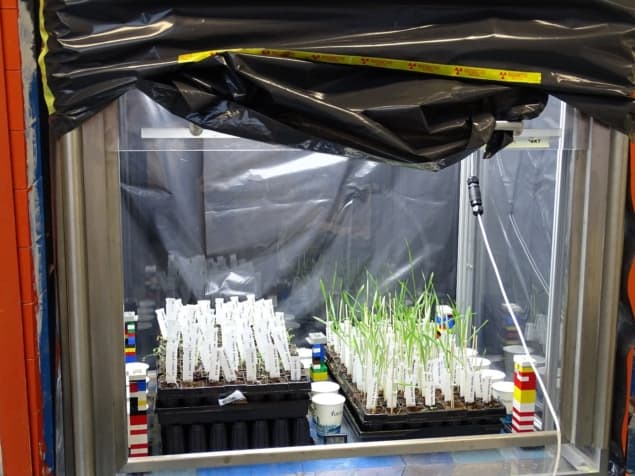
If humans ever do colonize Mars, producing food will be a difficult task. Besides the obvious challenges of providing water and nutrients for plants to grow, Martian farmers will also have to contend with damage by cosmic rays – according to researchers in the Netherlands.
Although Earth is also constantly bombarded by cosmic rays, ground-level radiation on Mars is about 17 times higher. Now, Nyncke Tack and colleagues at Wageningen University and the Research and the Reactor Institute Delft have studied how this radiation affects plants.
The team irradiated cress and rye plants with five specially-designed cobalt-60 radiation sources to simulate the radiation levels caused by cosmic rays on Mars. They observed multiple negative effects on the plants including brown leaves and dwarfed growth. In addition, after 28 days the harvest yield was smaller than in the non-radiated control group.
While the cobalt-60 sources only emitted gamma rays, plants on Mars would be subject to several different types of radiation, which could each affect the plants differently. Nevertheless, the team was able to conclude that crops would struggle with the effects of cosmic rays on Mars.
They describe their experiment in Frontiers in Astronomy and Space Science and there is lots more about growing food on Mars in this Physics World article, “Rocket for rocketeers”.
One thing you don’t have to worry about on Mars is rattlesnakes – although Rattlesnakes on Mars would be a great title for a B movie.
The venomous snakes are famous for their rattling tails, which are used to warn away potential attackers. If you hear a rattlesnake and then suddenly think it has come closer to you, then you may have fallen for an aural trick that has been discovered by Boris Chagnaud at Karl-Franzens-University Graz and colleagues.
In tests done in the lab they found that the snakes increased their rattling frequency from about 40 Hz to 60–100 Hz if a human form kept approaching them. To understand why, they created a virtual reality scenario in which a human subject perceives that they are walking through high grass towards a hidden rattling snake. When the subjects reached a virtual distance of 4 m from the snake, the rattling frequency was increased. When asked to say when they had reached 1 m away from the snake, all subjects underestimated the distance – and would therefore give the snake a wider berth in real life.
Chagnaud and colleagues describe their study in Current Biology.



